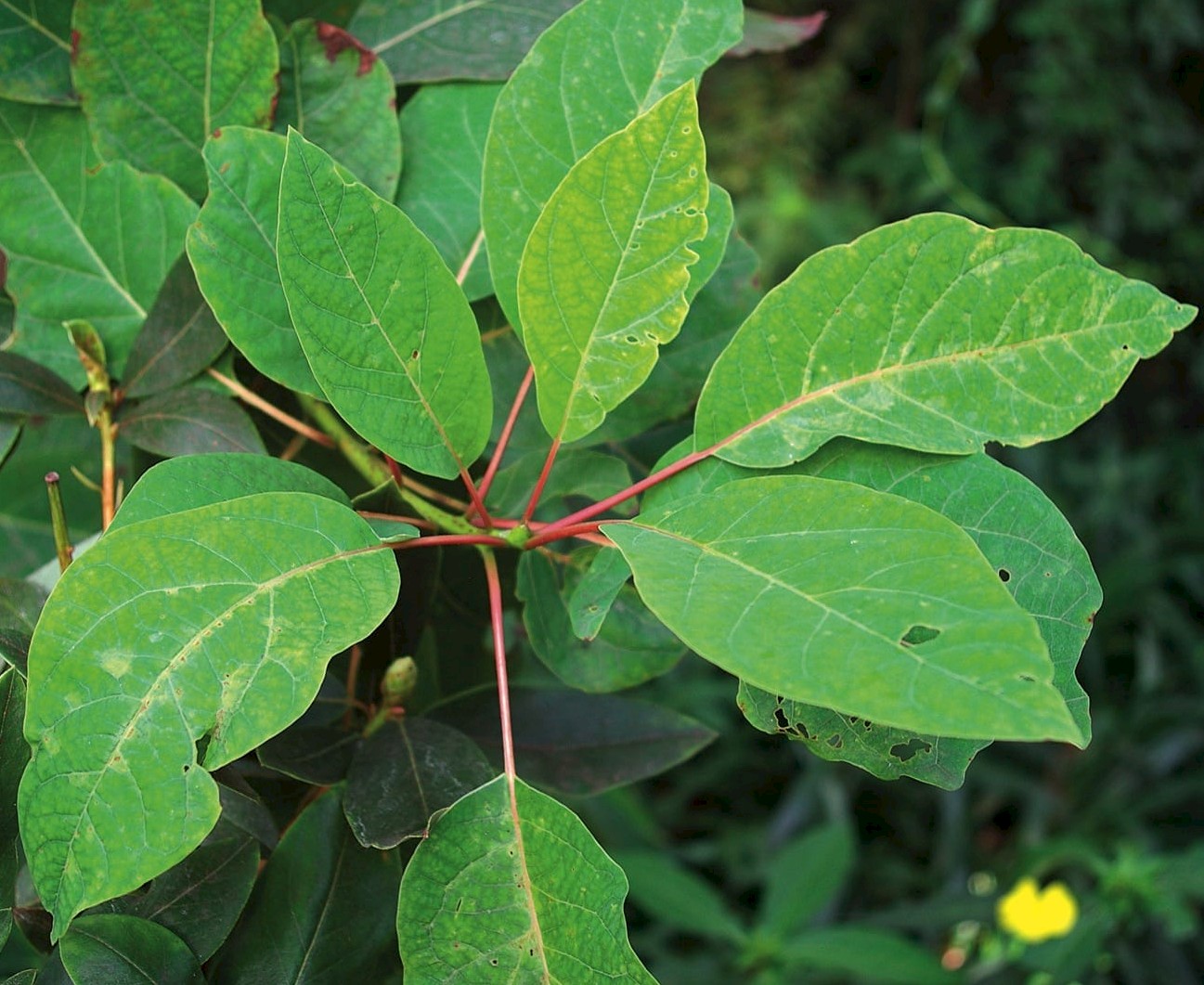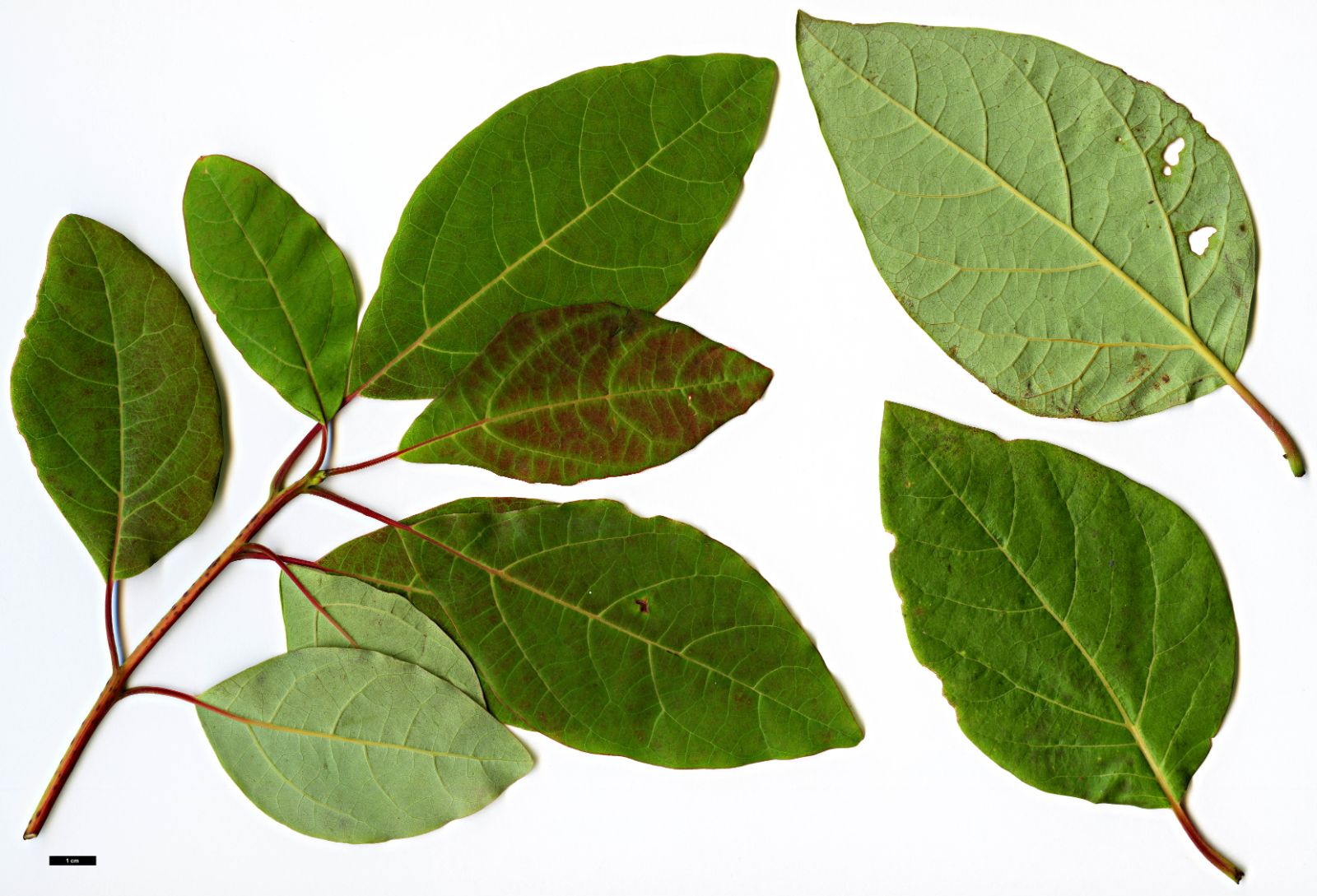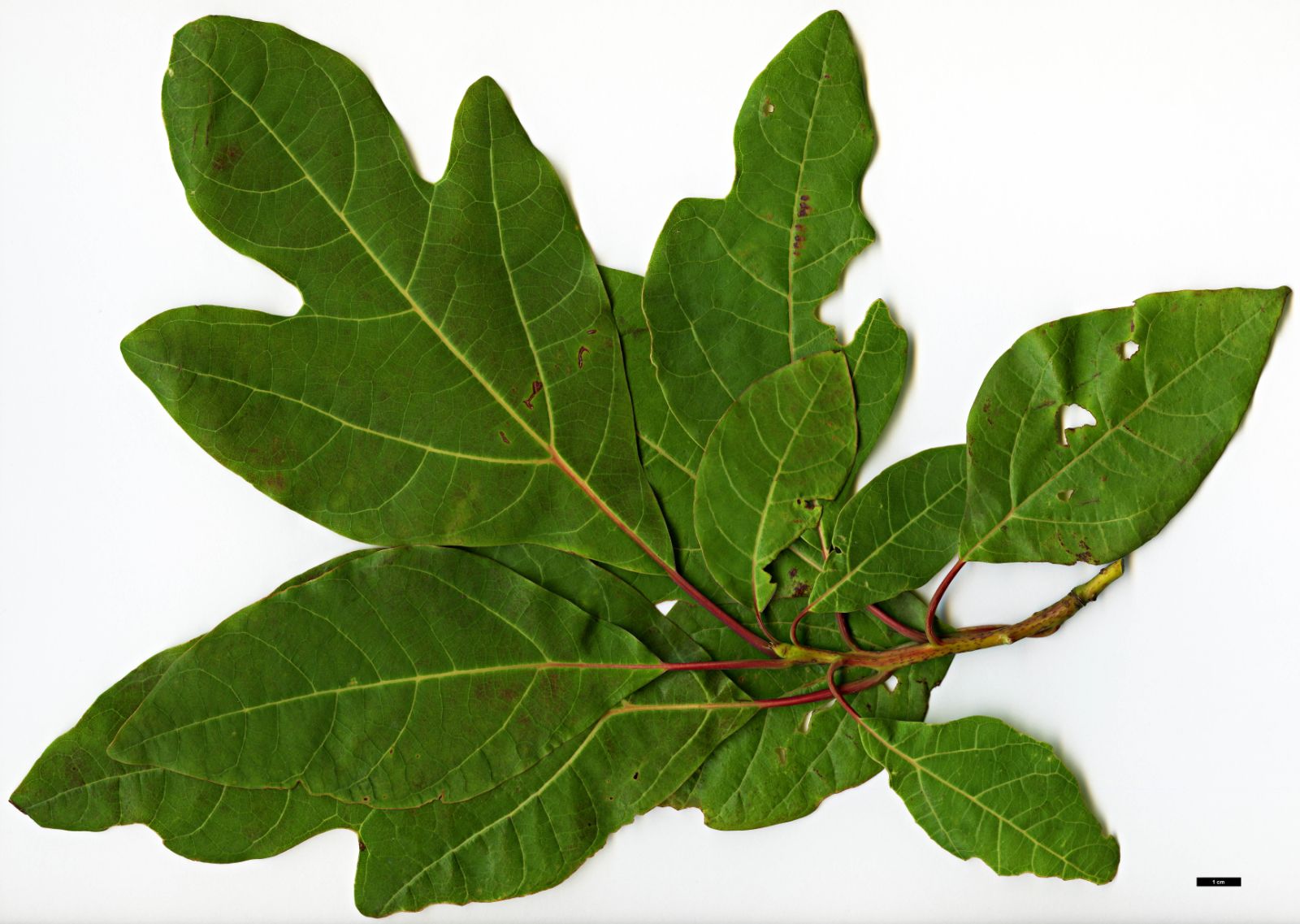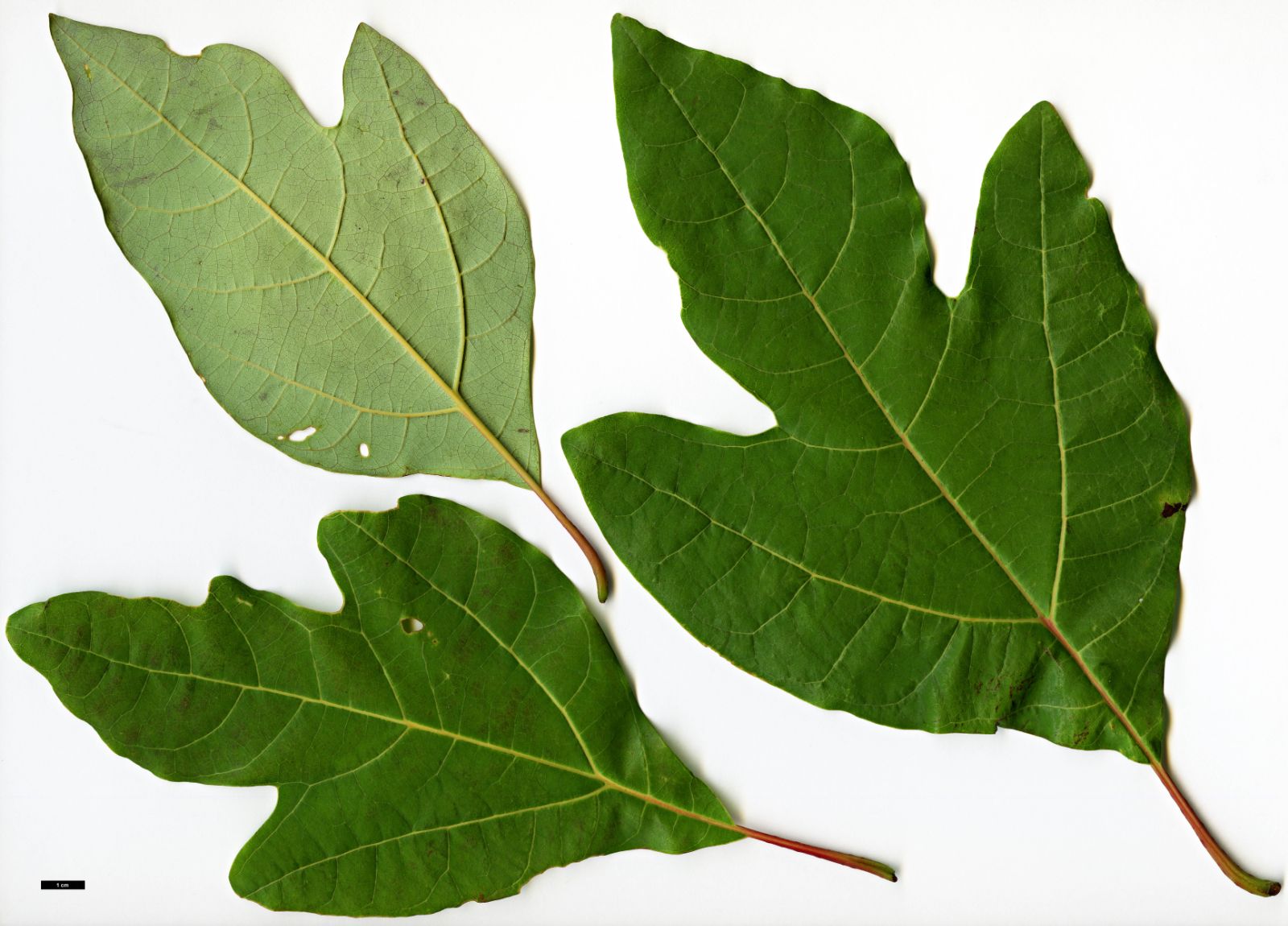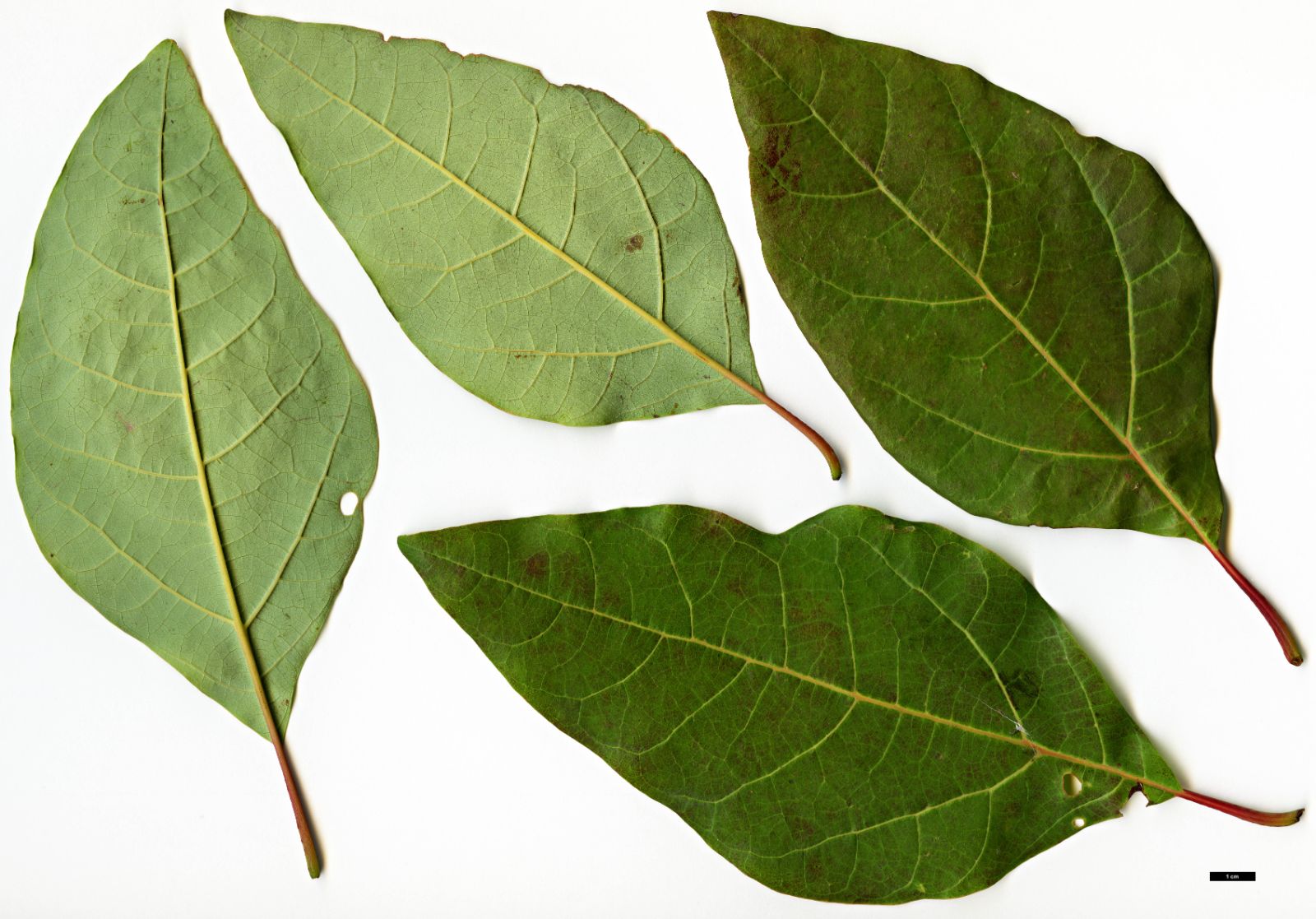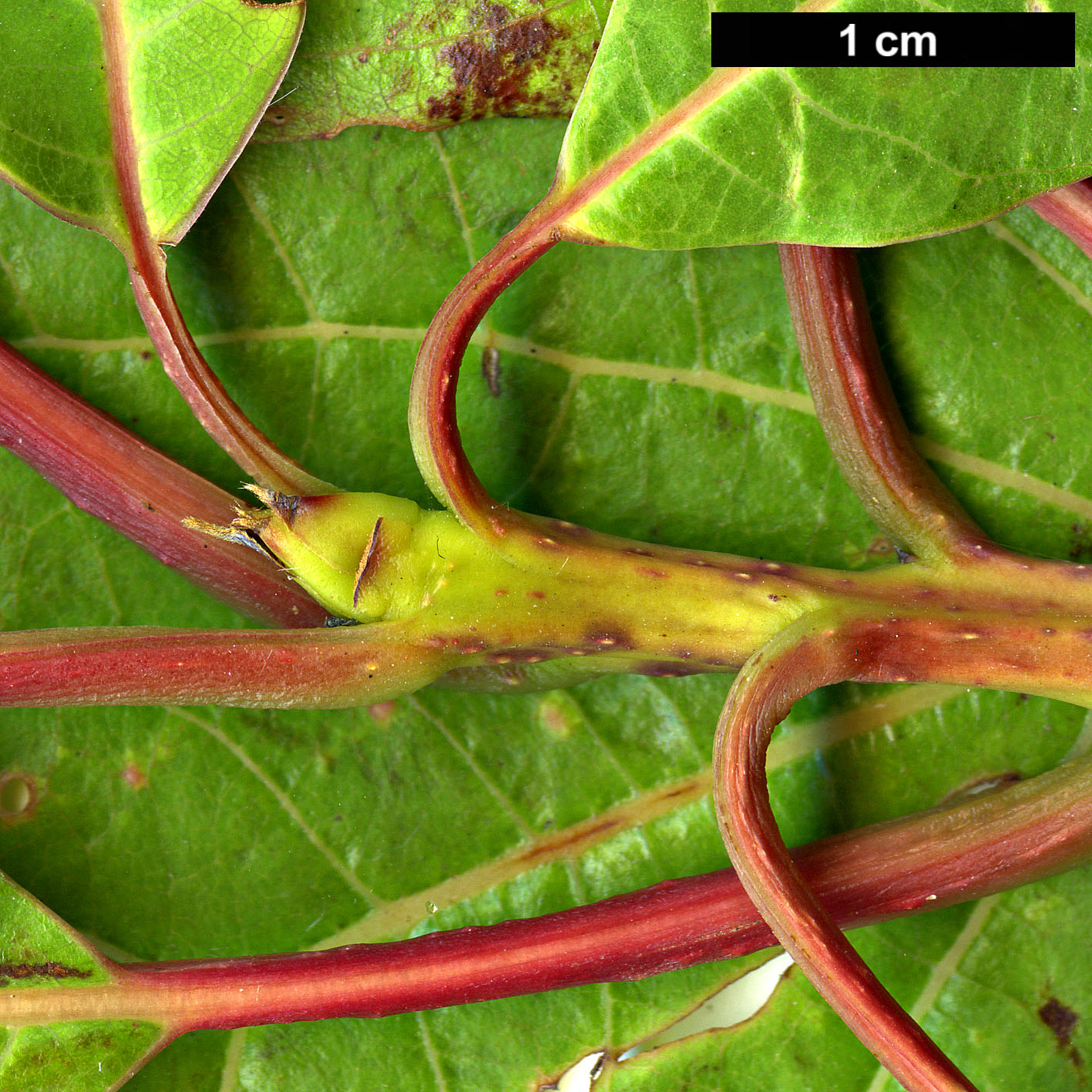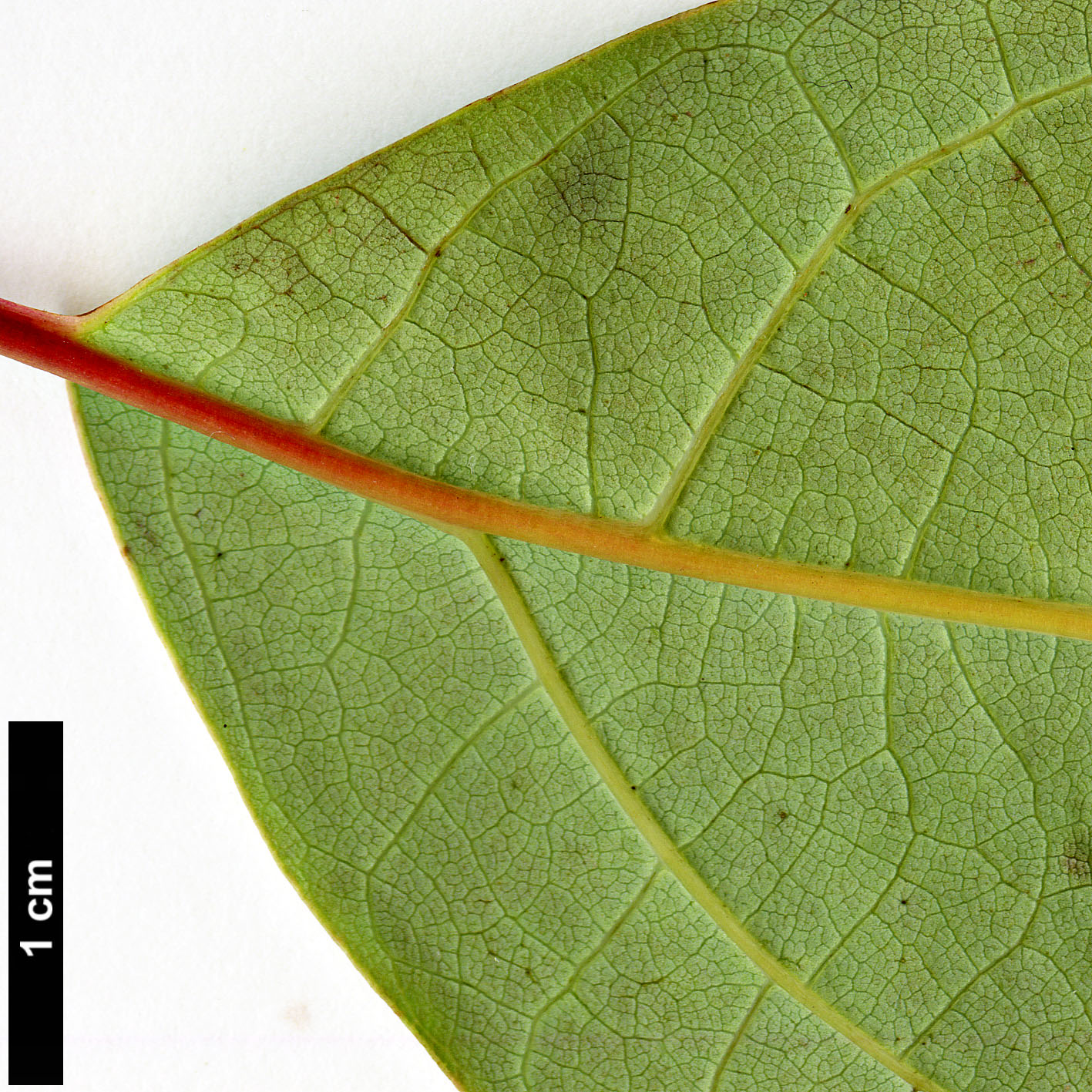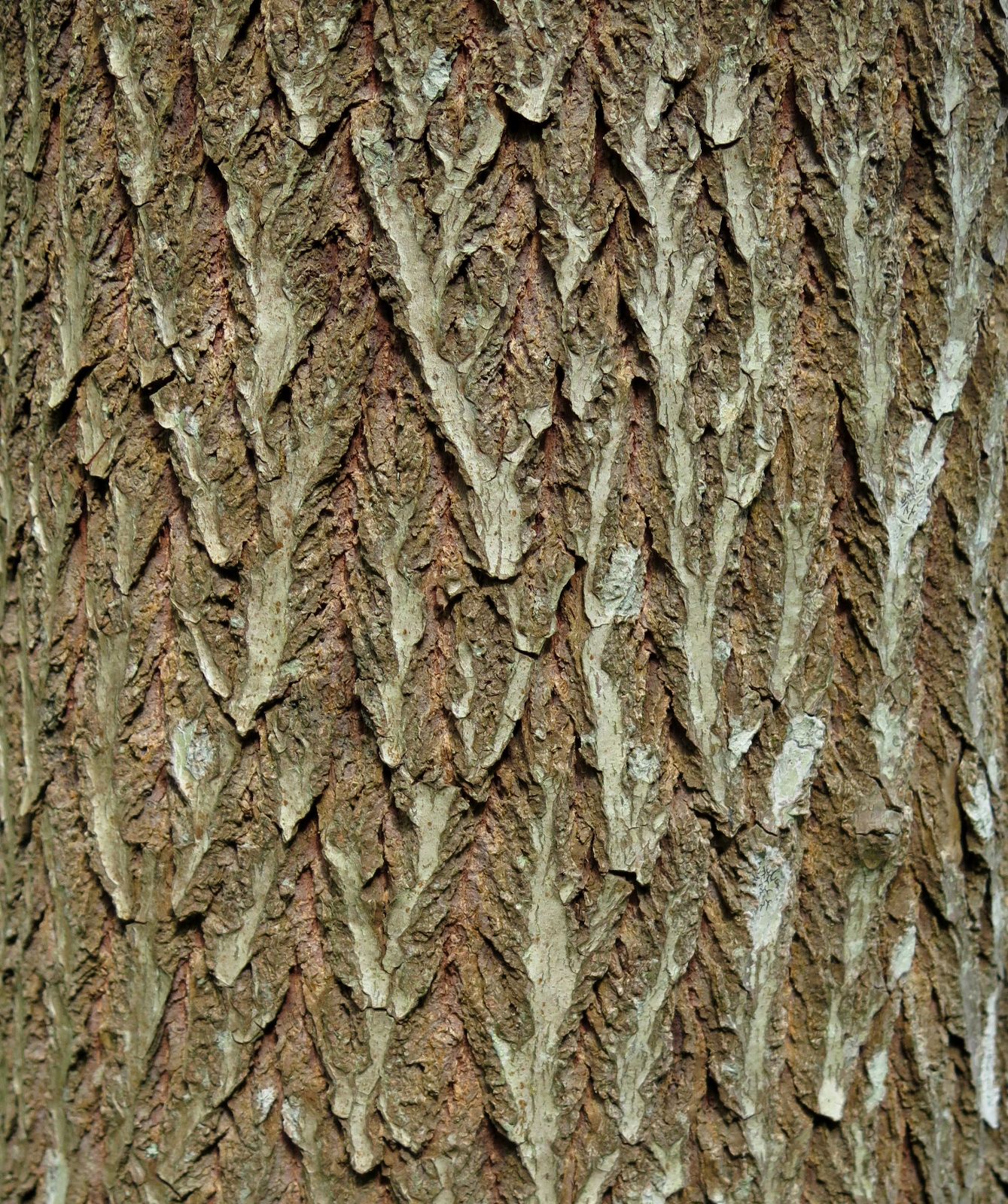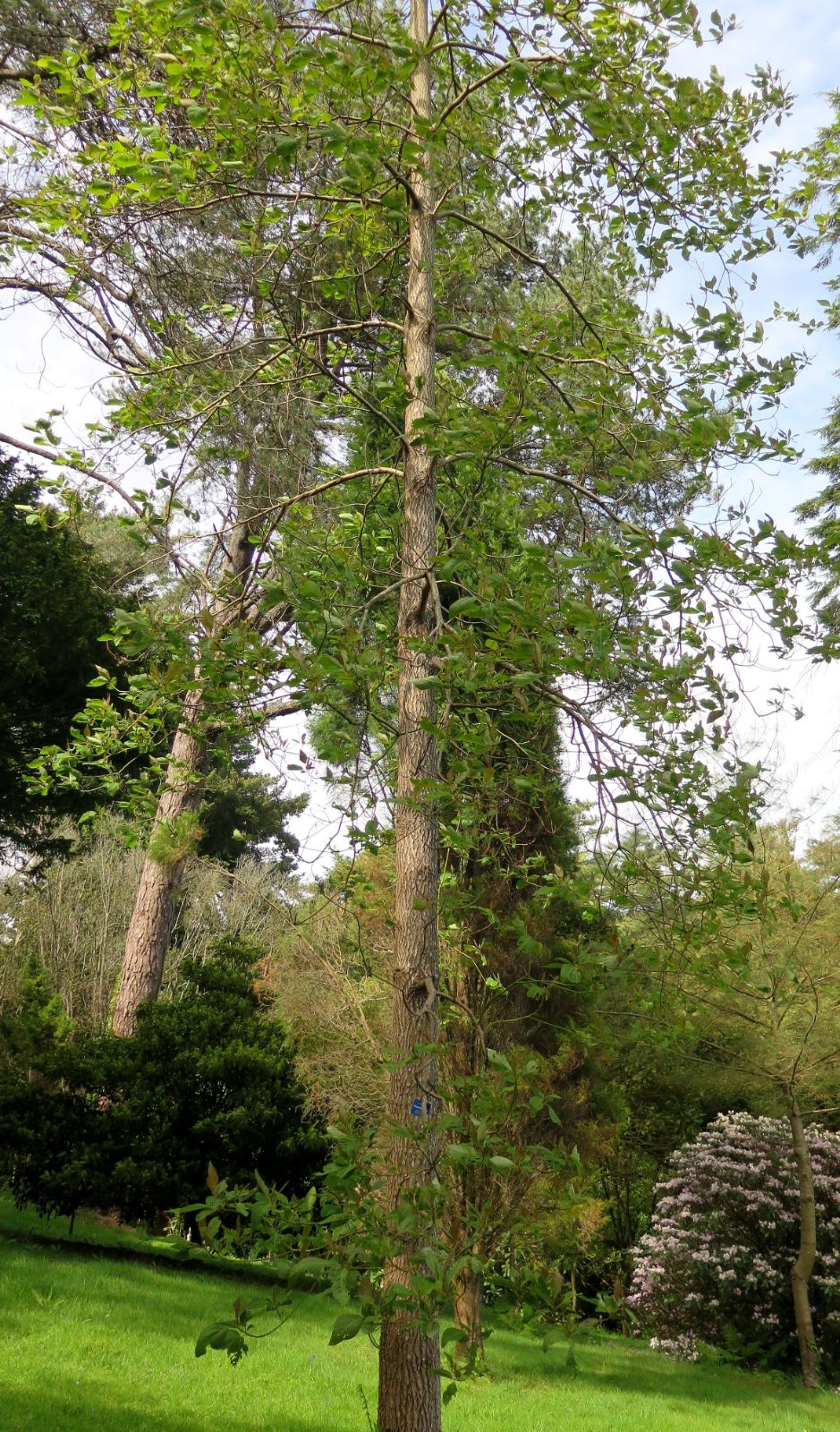Sassafras randaiense
Sponsor
Kindly sponsored by
Peter Hoffmann
Credits
Article from New Trees by John Grimshaw & Ross Bayton
Recommended citation
'Sassafras randaiense' from the website Trees and Shrubs Online (treesandshrubsonline.
Genus
Common Names
- Taiwan Sassafras
- Taiwan Sandalwood
Synonyms
- Lindera randaiensis Hayata
- Yushunia randaiensis (Hayata) Kamikoti
Deciduous medium-sized trees to 20m tall. Bark dark reddish-brown, longitudinally fissured. Branchlets glossy, thick and green to red-brown with lenticels and prominent leaf scars. Leaves alternate, unlobed or with 2 to 3 lobes, tending towards mostly unlobed leaves on mature trees. Fertile branchlets with mostly unlobed leaves but not exclusively so. Leaf blde pale glaucous abaxially, medium green adaxially, rhombic-ovate, 10–15(–16) × 3–6(–7.5) cm, lateral veins 7 or 8 pairs, petiole 3 to 5 cm cm more or less red tinged, base broadly cuneate, apex acute. Inflorescence terminal or subterminal, appearing before leaves in February to early March, ca. 3 cm with 5 to 6(9) racemes in an umbel at apex of branchlet, each subtended by 3 to 4 involucral bracts at base. Flowers unisexual or bisexual with 9 fertile stamens 9 in 3 whorls, filaments complanate, those of 3rd whorl each with 2 sessile glands at base; anthers ovoid-oblong. Ovary obovoid, ca. 1 mm; style short, ca. 1 mm; stigma discoid. Fruit ripening in August to September, globose, blue-black, ~6 mm diameter seated on a shallow cupule, peduncle 3–4 cm.
Distribution Taiwan central to southern Taiwan
Habitat Evergreen broadleaf forests, 900–2400m
USDA Hardiness Zone 8a
Sassafras randaiense is quite rare in cultivation with quite limited wild collected material in western cultivation as almost all recorded material has arrived via seed from the Taiwan Forestry Institute. It was first introduced to the west from Taiwan by Mark Flanagan and Tony Kirkham in 1992. As recounted in their book (Flanagan & Kirkham 2005), they found the species growing as an understorey to Taiwania cryptomerioides near Chilan Shan, Taiwan, but the trees were not fruiting. The seed they brought home was a gift from the Taipei Botanic Garden and the Taiwan Forestry Research Institute. Sasafras randaiense is distributed in the middle elevation of Taiwan with a frequently foggy environment in scattered locations and is listed as endangered based on IUCN Red List Categories and Criteria. Plants at Tregrehan are thriving, having reached over 10m in 2023 (T. Hudson, pers. comm. 2023). Flowers are pale yellow before the foliage emerges with fall color reddish-orange to yellow. Perhaps the largest extant tree in Taiwan is found at the Guanwu Forest Recreation Area belonging to the Taiwan Forestry Bureau where a giant specimen is growing in front of an old house (Chien-Fan Chen pers. comm. 2023). There is limited information on propagation but fresh seed if available germinates quickly while older seed appears to lose viability or exhibit complex dormancy. Root and stem cuttings have rarely proven to be sussessful.

